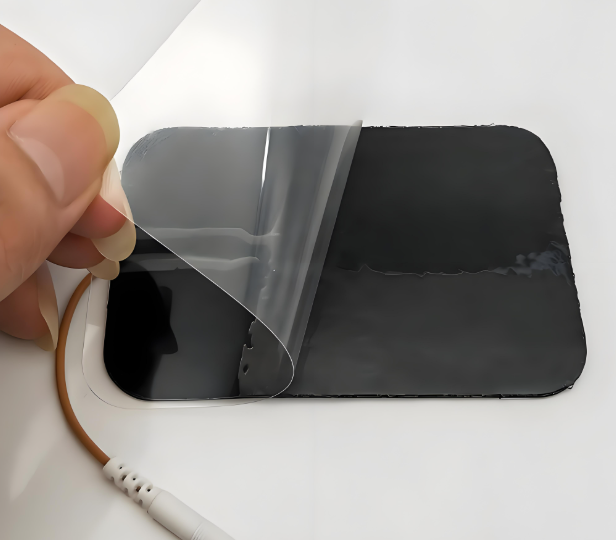Transparent heating films are widely used in applications such as automotive displays, camera lenses, touch panels, and anti-fog windows. When designing a transparent heating film, one of the key factors that determines its heating uniformity and performance is the electrode size. Many engineers overlook this part during early design, yet it directly affects the effective heating area, power distribution, and even the visual experience of the final product.
Let’s take a closer look at how electrode dimensions are defined and what factors influence their selection.
In most cases, the standard electrode width for a transparent heating film is 5mm on each side. This means the total size of the heating film will be 10mm larger than the visible area—5mm per side.
For example, if the visible area is 100mm × 100mm, the overall film size will be around 110mm × 110mm. This 10mm margin accommodates the electrodes that drive current through the heating element evenly, ensuring stable and consistent heating across the surface.

The desired operating temperature plays a decisive role in determining electrode width.
If a customer requires a higher surface temperature, the electrode width increases, typically ranging from 10mm to 15mm per side. The wider electrode supports higher current flow and improves heat uniformity, especially for larger or high-power films. However, this also reduces the visible heating area since a broader electrode zone surrounds the active heating region.
For low to moderate temperature applications, the standard 5mm width is usually sufficient. It balances transparency, heating efficiency, and visual aesthetics.
The desired surface temperature is the key factor in determining electrode size.
A wider electrode, however, slightly reduces the visible heating area. Designers must carefully balance thermal performance and visual clarity depending on the application.
Proper electrode design affects several critical performance factors:
Poorly sized electrodes can cause uneven heating, localized burning, or premature failure. In high-power applications, incorrect sizing can even create safety hazards.

The electrode design in a transparent heating film is critical to achieving optimal heating performance, uniform temperature distribution, and visual clarity. Electrode design for transparent heating films is a complex, multi-factor process. Engineers must consider:
Each factor influences electrode width, shape, placement, and material choice. Optimal design ensures uniform heating, energy efficiency, visual clarity, and long-term reliability.
Collaborating with an experienced manufacturer like Danyu Electronics allows precise electrode sizing and customization, ensuring that transparent heating films meet high-performance and safety standards for automotive, medical, industrial, and consumer applications.
One of our client requests a transparent heater for a 150mm × 150mm glass display, with a 70°C target temperature.
This adjustment is essential for products where precise temperature control is critical, such as smart mirrors, automotive HUDs, or anti-fog camera lenses.
Electrodes are not limited to straight lines. They can be customized to optimize heating performance:
Custom electrode design ensures efficient heating while meeting visual and functional requirements.
The electrode size of a transparent heating film is one of the most important design parameters. Standard widths start at 5mm per side, while high-temperature or high-power applications may require 10–15mm.
Optimized electrode design ensures:
Working with an experienced manufacturer like Danyu Electronics allows engineers to design custom transparent heating films with precise electrode sizing, uniform temperature distribution, and optimal performance for automotive, medical, and industrial applications.
Q1: Can electrode shapes be customized?
Yes. Curved, straight, or grid electrodes can be designed to match the heating pattern and visual requirements.
Q2: How does electrode width affect visibility?
Wider electrodes reduce the visible area but improve heating uniformity and current handling.
Q3: What materials influence electrode sizing?
High-conductivity materials like silver allow narrower electrodes; low-conductivity materials require wider electrodes to prevent hotspots.
Q4: What is the maximum width for high-temperature films?
Typically, electrode widths range from 10mm to 15mm per side, depending on desired temperature and film size.
Q5: Can electrode width be modified after production?
No. Electrode size is defined during design and fabrication, so proper planning is essential.
Simply drop your email or phone number in the contact form, and we'll promptly reply you shortly.